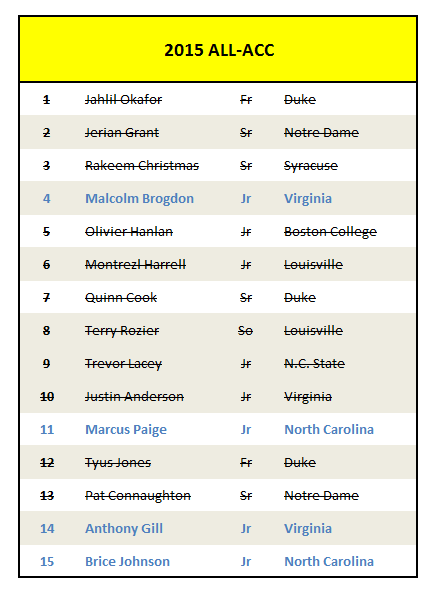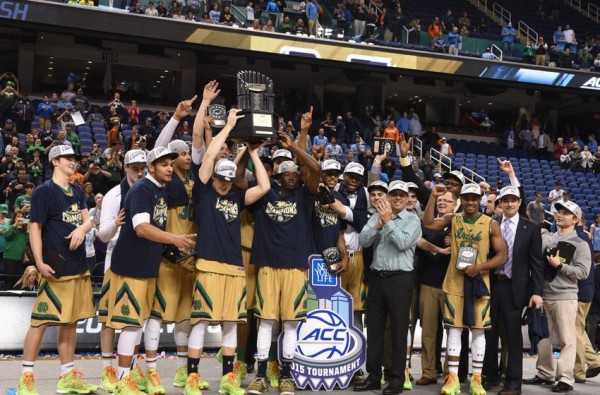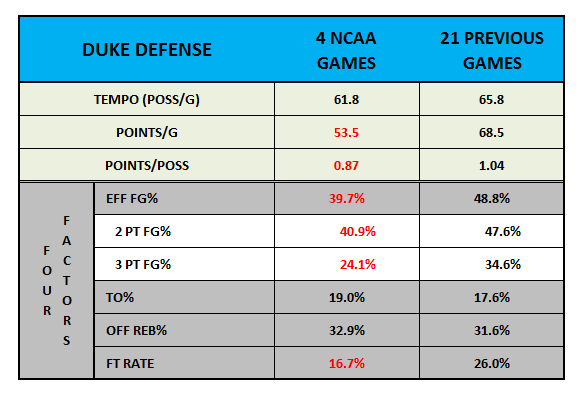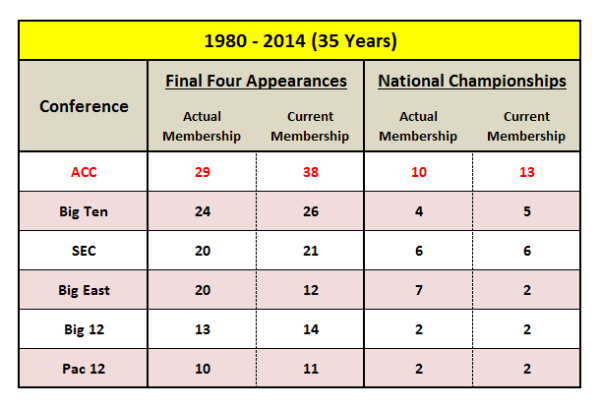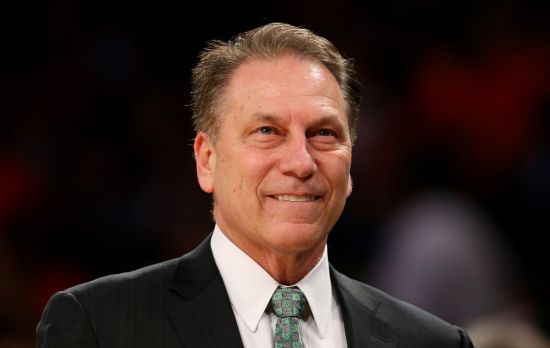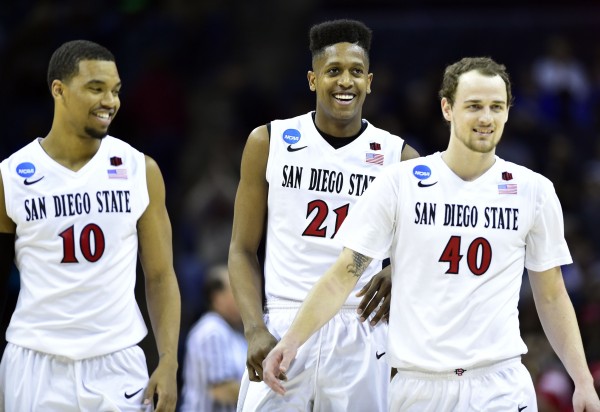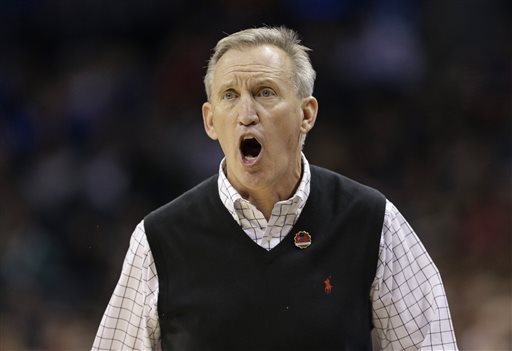Posted by Brad Jenkins (@bradjenk) on April 10th, 2015
With Monday night’s fifth career NCAA Championship, Mike Krzyzewski’s legacy took another long stride into the history books of the college game. In what he has called the most enjoyable season of his 40-year coaching career, Kryzyzewski showed his versatility as a head coach by leading Duke to the greatest of heights by utilizing a makeup unlike any of his previous champions. The 68-year old deserves all the credit he has received for his prolonged success, winning in three completely different eras of the sport by adapting to the standards of the times. His first two title teams (1991 & 1992) were won when programs could be built around long-term stars like Christian Laettner, Bobby Hurley and Grant Hill. When his 2001 team, led by Shane Battier, Jason Williams and Mike Dunleavy, Jr., won Krzyzewski’s third championship, the lure of the NBA had gutted much of the young talent from the college game. The last decade has brought the one-and-done rule to college basketball, and at least initially, Duke did not seem to be an interested party — Krzyzewski’s 2010 national champs featured five upperclassmen starters.
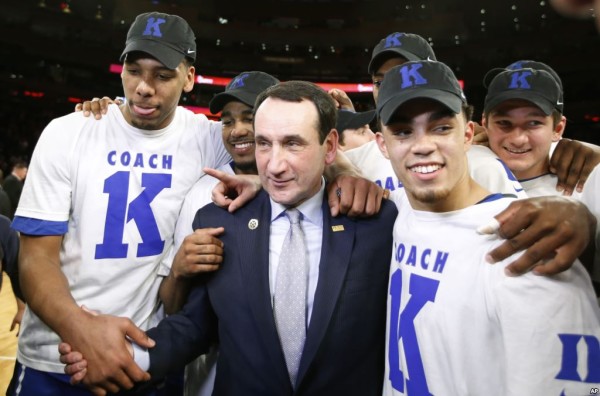
It was a year of milestones for Coach K — his 1,000th win and fifth national title.
(AP Photo)
Since that fourth national title, the Blue Devils had crashed and burned with their last two high-profile freshmen — Austin Rivers (2012) and Jabari Parker (2014) were unwilling participants in huge NCAA Tournament upsets of Duke by Lehigh and Mercer, respectively. Theirs were the reference points going into a campaign when Coach K welcomed the nation’s top recruiting class of Jahlil Okafor, Tyus Jones, Justise Winslow and Grayson Allen by signaling that he was all-in with the modern recruiting strategy focusing on one-and-dones. Krzyzewski masterfully molded the young Blue Devils around an elite offense and a gradually improving defense all the way to another championship run.
We attended a private scrimmage session in Cameron Indoor Stadium back in October and shared our observations on what we witnessed here. While the freshmen’s raw talent was obvious, we came away from the practice session concerned with how the two Blue Devils’ veterans would handle the robust attention and acclaim that the newcomers were already getting. Quinn Cook was one of the players who didn’t play well that day, but he soon morphed into exactly what the Duke coaching staff wanted him to be — a big brother, supporter and go-to teammate for the four rookies. As a result of Cook’s deference, Krzyzewski called the senior “as good a leader as I’ve had in my 35 years at Duke.” Think about what that means from a guy who has coached the likes of Laettner, Ferry, Hurley, Battier and Dawkins. Rasheed Sulaimon, the other veteran who struggled in that October scrimmage, was ultimately kicked off the team, an event that seemed to bring the eight remaining players together down the stretch of the season. Read the rest of this entry »
| acc, microsites
| Tagged: Amile Jefferson, duke, feature, grayson allen, Jahlil Okafor, justise winslow, marshall plumlee, mike krzyzewski, quinn cook, Tyus Jones
Share this story
